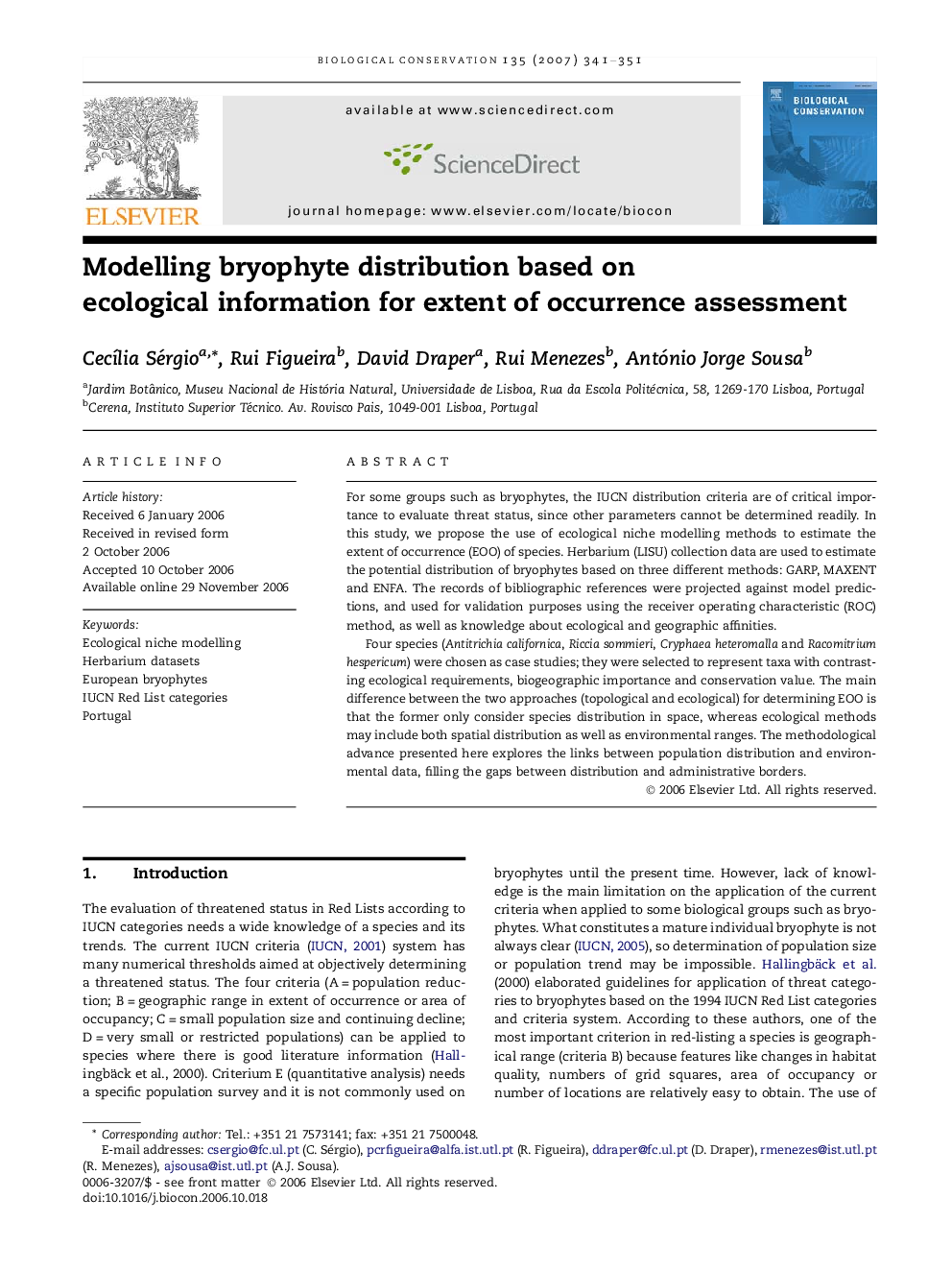| Article ID | Journal | Published Year | Pages | File Type |
|---|---|---|---|---|
| 4387227 | Biological Conservation | 2007 | 11 Pages |
For some groups such as bryophytes, the IUCN distribution criteria are of critical importance to evaluate threat status, since other parameters cannot be determined readily. In this study, we propose the use of ecological niche modelling methods to estimate the extent of occurrence (EOO) of species. Herbarium (LISU) collection data are used to estimate the potential distribution of bryophytes based on three different methods: GARP, MAXENT and ENFA. The records of bibliographic references were projected against model predictions, and used for validation purposes using the receiver operating characteristic (ROC) method, as well as knowledge about ecological and geographic affinities.Four species (Antitrichia californica, Riccia sommieri, Cryphaea heteromalla and Racomitrium hespericum) were chosen as case studies; they were selected to represent taxa with contrasting ecological requirements, biogeographic importance and conservation value. The main difference between the two approaches (topological and ecological) for determining EOO is that the former only consider species distribution in space, whereas ecological methods may include both spatial distribution as well as environmental ranges. The methodological advance presented here explores the links between population distribution and environmental data, filling the gaps between distribution and administrative borders.
